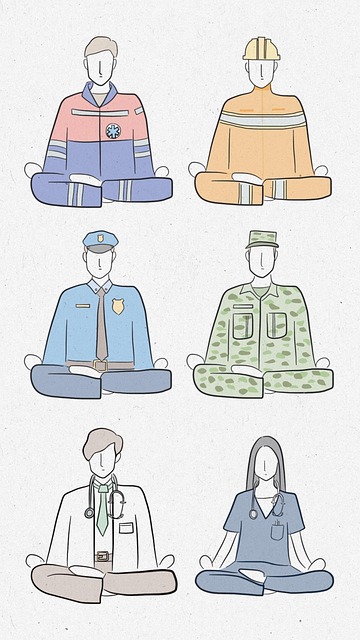Castle Rock Depression Therapy (CRDT) is an effective approach to combat negative thinking patterns, reduce anxiety and depression, and boost overall well-being. By integrating CRDT techniques like visualizing a safe space, gratitude journaling, and self-awareness exercises into daily life, individuals can enhance mental health resilience, manage stress, and improve life satisfaction. This therapy not only offers immediate results but also empowers long-term self-care strategies through cultural competency training for healthcare providers and policy advocacy for better mental health access.
Positive thinking exercises have emerged as powerful tools to enhance mental well-being. This article explores the transformative potential of positive thought patterns, highlighting their profound impact on mental health. We delve into the Castle Rock Depression Therapy Technique, a renowned approach designed to cultivate optimism and resilience. Furthermore, practical strategies are offered to help individuals sustain a positive mindset in their daily lives, providing valuable insights for those seeking to combat negative thoughts effectively, especially through methods like Castle Rock Depression Therapy.
- Understanding Positive Thinking and Its Impact on Mental Health
- Implementing the Castle Rock Depression Therapy Technique
- Strategies for Sustaining a Positive Mindset in Daily Life
Understanding Positive Thinking and Its Impact on Mental Health

Positive thinking isn’t merely a catchy phrase; it’s a powerful tool that can significantly influence mental health and overall well-being. At its core, positive thinking involves cultivating optimistic attitudes, reframing negative thoughts, and focusing on personal strengths and accomplishments. This practice has been shown to reduce symptoms of anxiety and depression, boost resilience, and enhance life satisfaction. In today’s fast-paced world, where stress and pressure are prevalent, Castle Rock Depression Therapy offers valuable insights into harnessing the power of positive thinking as a form of self-care.
By integrating positive thinking exercises into daily routines, individuals can foster a more resilient mindset. This process involves challenging negative thought patterns, replacing them with realistic and positive alternatives, and practicing gratitude. Such practices not only improve mental health but also enhance one’s ability to navigate life’s challenges. Moreover, cultural competency training for healthcare providers plays a crucial role in supporting clients on this journey, ensuring that Trauma Support Services are accessible and tailored to meet diverse needs.
Implementing the Castle Rock Depression Therapy Technique

The Castle Rock Depression Therapy Technique is a powerful tool to combat negative thinking patterns and enhance mental well-being. This therapeutic approach encourages individuals to challenge their depressing thoughts by visualizing a safe and positive space, akin to a castle rock—a symbol of resilience and strength. By mentally placing themselves within this fortress-like sanctuary, people can experience a sense of calm and security, counteracting the effects of stress and anxiety.
Implementing this technique involves finding a quiet, comfortable space where one can close their eyes and imagine a solid, towering castle rock. It is during this mental journey that individuals replace negative thoughts with positive affirmations, reinforcing a confidence-boosting mindset. Regular practice of Castle Rock Depression Therapy can significantly contribute to mental health awareness and overall stress management, empowering individuals to navigate life’s challenges with greater ease and optimism.
Strategies for Sustaining a Positive Mindset in Daily Life

Maintaining a positive mindset is an ongoing practice, especially in a world that often presents challenges and setbacks. When implementing Castle Rock Depression Therapy or any form of mental health support, it’s not just about achieving results but also about fostering long-term strategies for self-care. One effective approach is to incorporate daily rituals that nurture positivity. This can include practices like gratitude journaling, where individuals take a few moments each day to reflect on and appreciate the positive aspects of their lives. It might also involve setting realistic goals and celebrating small victories, which helps build momentum and reinforces a sense of accomplishment.
Additionally, self-awareness exercises play a pivotal role in sustaining positivity. By understanding one’s thoughts and emotions, individuals can challenge negative thought patterns and replace them with more constructive alternatives. This proactive mindset shift can significantly impact overall well-being, leading to improved self-esteem and resilience. Encouraging open conversations about mental health, through mental health policy analysis and advocacy, also contributes to creating a supportive environment where seeking help is normalized, promoting better access to resources like Castle Rock Depression Therapy for those in need.
Positive thinking exercises, such as the Castle Rock Depression Therapy technique, offer a powerful tool to enhance mental well-being. By incorporating strategies that foster a positive mindset, individuals can navigate life’s challenges more effectively. This article has explored the benefits of positive thinking and provided practical tools, including the Castle Rock Depression Therapy approach, to help readers sustain a resilient and optimistic outlook. Remember, cultivating positivity is a journey; with consistent practice, these techniques can transform lives.














